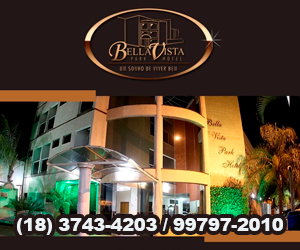Urban design plays a crucial role in shaping the livability and sustainability of modern cities. It influences how heat is distributed across urban landscapes and determines the efficiency of traffic flow, impacting daily life, energy consumption, and environmental health. Understanding these relationships helps planners and residents alike to foster cities that are resilient, comfortable, and accessible.
This article explores the fundamental principles of urban design affecting heat and traffic, supported by practical examples and research-backed insights. From street orientations to innovative green spaces, we will examine how thoughtful planning can transform urban environments into more sustainable spaces.
- Introduction to Urban Design and Its Significance
- Fundamental Principles of Urban Design Affecting Heat and Traffic
- The Science Behind Urban Heat Management
- Traffic Flow Optimization Through Design Choices
- Case Studies of Urban Design Transformations
- Unconventional Influences on Urban Design
- Challenges and Future Directions
- Conclusion: Integrating Design for Resilient and Efficient Cities
Introduction to Urban Design and Its Significance
Urban design refers to the arrangement of buildings, streets, open spaces, and infrastructure within a city to create functional, attractive, and sustainable environments. It encompasses everything from street grids to public spaces, influencing how residents move, interact, and experience their surroundings. Effective urban design not only shapes the aesthetic appeal but also impacts environmental health and social cohesion.
For example, a well-planned city can mitigate the urban heat island effect—where urban areas become significantly warmer than surrounding rural areas—by integrating green spaces and reflective materials. Similarly, thoughtful street layouts can streamline traffic flow, reducing congestion and pollution. These functional outcomes are directly tied to core principles of urban planning, making it a vital component of modern development.
Fundamental Principles of Urban Design Affecting Heat and Traffic
How City Layout Impacts Heat Distribution and Urban Heat Islands
City layout significantly influences how heat accumulates and dissipates across urban spaces. Dense clusters of buildings with limited airflow can trap heat, creating urban heat islands that increase ambient temperatures by up to 7°C compared to rural areas. To counter this, urban designers incorporate open spaces, strategic building spacing, and orientation to enhance natural cooling.
For instance, cities like Los Angeles have experimented with zoning that encourages building setbacks and green roofs, which reduce heat absorption. These measures demonstrate how layout decisions directly influence thermal comfort and energy consumption.
Street Orientation, Building Placement, and Airflow
Aligning streets with prevailing winds allows for better natural ventilation, cooling urban areas effectively. Buildings placed to channel airflow can reduce reliance on air conditioning, lowering energy use and emissions. For example, urban planners in Singapore often orient streets and design building facades to maximize cross-ventilation, leveraging natural airflow for cooling.
Connectivity and Accessibility in Traffic Flow
Efficient traffic flow depends on well-connected street networks that facilitate smooth movement and distribute traffic evenly. Grid patterns, for example, enable multiple routes, reducing congestion, while cul-de-sacs can create bottlenecks. Pedestrian pathways and public transit hubs further enhance accessibility, decreasing dependence on private vehicles. Modern cities increasingly adopt integrated designs to promote sustainable mobility and reduce traffic-related emissions.
The Science Behind Urban Heat Management
Materials Used in Urban Construction and Their Thermal Properties
Construction materials influence how much heat buildings absorb and radiate. Traditional asphalt absorbs a significant amount of solar radiation, contributing to higher temperatures. Modern alternatives like cool roofs with reflective coatings or lighter-colored pavements can reduce heat absorption by up to 50%. Additionally, high-albedo materials help urban areas stay cooler, as supported by research from the National Renewable Energy Laboratory.
Role of Green Spaces and Water Bodies in Cooling Urban Environments
Vegetation and water features are vital in mitigating urban heat. Green spaces provide shade and facilitate evapotranspiration, a process where plants release moisture, which cools the surrounding air. Water bodies, such as ponds or fountains, also assist in heat reduction through evaporation. Cities like Melbourne have integrated urban parks and water features into their design to promote cooling and improve residents’ quality of life.
Non-Obvious Factors: Historical Influence on Modern Urban Planning
Historical building blocks and city layouts have long-term effects on urban heat and traffic patterns. For example, medieval European cities with narrow, winding streets often faced challenges with heat retention and congestion. Modern planners analyze these ancient layouts to understand their strengths and limitations, adapting lessons learned for contemporary sustainable design. Recognizing these historical influences enriches our approach to creating resilient urban spaces.
Traffic Flow Optimization Through Design Choices
Grid vs. Organic Street Patterns: Effects on Congestion and Travel Times
Grid street patterns offer predictability and multiple routes, which help distribute traffic evenly and reduce congestion. Conversely, organic or winding street layouts can create bottlenecks, increasing travel times and frustration. Cities like New York exemplify grid designs that facilitate efficient movement, whereas older European towns often feature organic layouts that, while charming, pose challenges for modern traffic management.
Impact of Public Transportation Hubs and Pedestrian Pathways
Locating transit hubs strategically and designing pedestrian-friendly pathways encourage modal shifts from private vehicles to public transit and walking. This reduces traffic congestion and vehicle emissions. For example, the integration of transit-oriented development in cities like Tokyo has significantly enhanced traffic efficiency and air quality.
Case Study: Modern Example of Traffic-Efficient Urban Design
Consider My Sweet Town, a contemporary city designed with traffic flow in mind. Its grid layout, combined with extensive public transit and pedestrian zones, demonstrates how strategic planning can minimize congestion and improve mobility. Such models highlight the importance of integrating multiple design principles for optimal results.
Case Studies of Urban Design Transformations
Examples from Different Cities
Barcelona’s Superblocks reduce vehicle traffic in residential areas, enhancing air quality and pedestrian safety. Similarly, Seoul’s Cheonggyecheon stream renovation transformed an overpass into a green corridor, cooling the city and alleviating heat islands.
Lessons Learned from Urban Redesign Projects
Successful projects emphasize community involvement, data-driven planning, and flexibility. Incorporating green infrastructure and sustainable materials consistently yields better environmental and social outcomes.
Historical Innovations and Modern Practices
Ancient cities used orientation and natural features to manage heat and movement. Modern urban design continues this legacy, utilizing advanced technology and ecological principles to build resilient cities.
Unconventional Influences on Urban Design
Role of Technology and Data in Planning
Smart sensors, Geographic Information Systems (GIS), and modeling software enable precise analysis of heat patterns and traffic flows. These tools allow planners to test scenarios before implementation, leading to more effective urban interventions.
Cultural Factors Shaping City Layouts
Cultural values influence urban forms—European cities often prioritize aesthetics and historical preservation, while Asian cities may emphasize efficiency and sustainability. Recognizing these factors leads to culturally sensitive and functional design solutions.
Surprising Connections: Urban Stability and Structural Elements
Metaphorically, just as stabilizers in dynamite ensure safety, urban stability relies on foundational design elements—like balanced traffic distribution and heat management—that keep the city resilient against challenges. Embracing innovative ideas in these areas can lead to more durable urban environments.
Challenges and Future Directions
Balancing Heat Mitigation and Traffic Efficiency with Urban Growth
Rapid urbanization often strains existing infrastructure. Integrating heat reduction measures with traffic management requires comprehensive planning and adaptive strategies to accommodate growth without sacrificing sustainability.
Emerging Technologies: Smart Cities and Sustainable Design
Innovations such as IoT devices, green building materials, and renewable energy systems are shaping future cities. These technologies facilitate real-time management of heat and traffic, making urban environments more responsive and efficient.
Community Involvement in Urban Planning
Engaging residents ensures that urban design reflects local needs and fosters stewardship. Participatory planning leads to more inclusive, effective, and sustainable urban spaces.
Conclusion: Integrating Design for Resilient and Efficient Cities
“Thoughtful urban design is the backbone of cities that are not only functional but also resilient against the challenges of heat and traffic congestion.”
In summary, urban design deeply influences environmental comfort and mobility. By applying scientific principles, embracing innovative technologies, and involving communities, planners can create cities that are healthier, more efficient, and more enjoyable to live in. Modern examples like My Sweet Town illustrate how integrated planning leads to vibrant urban spaces. As cities continue to grow, the importance of strategic, sustainable design becomes ever more critical for future generations.












